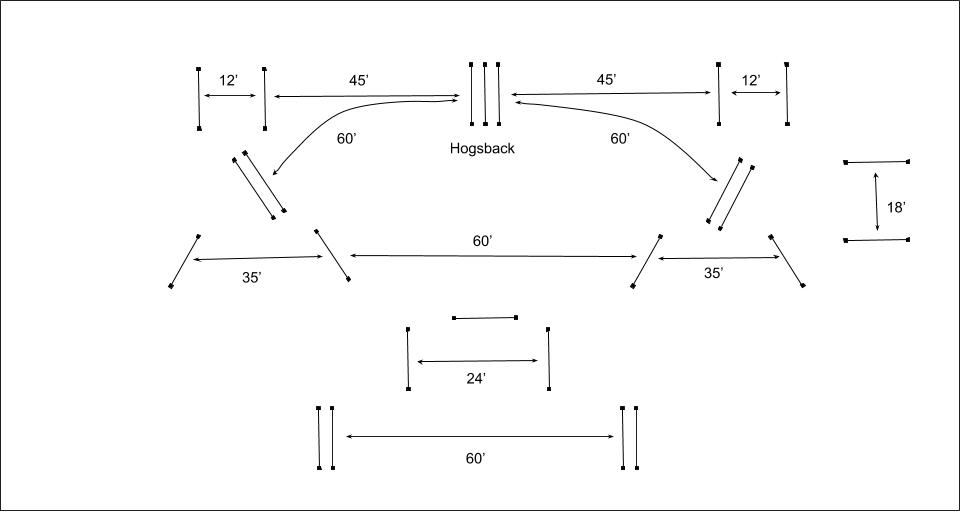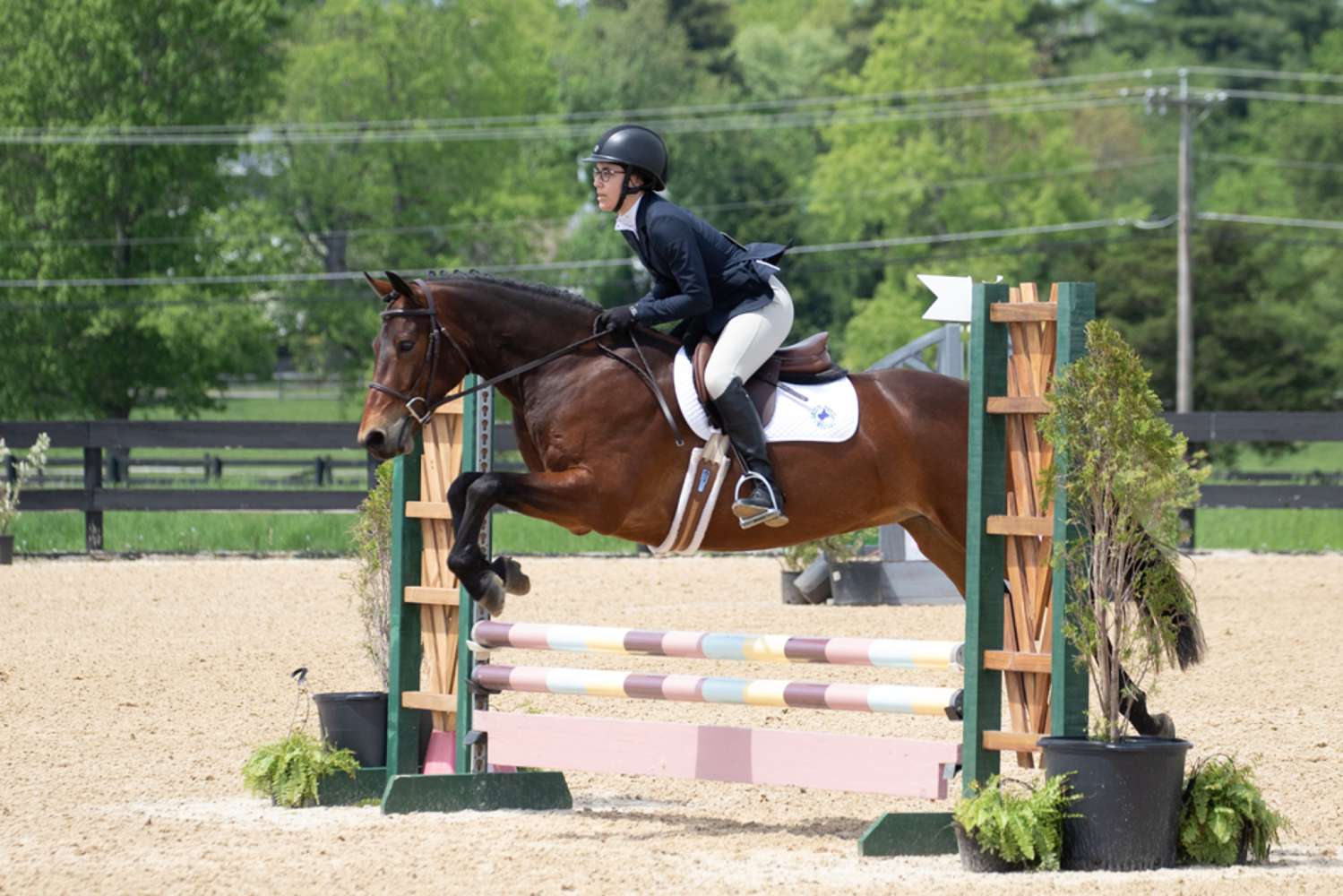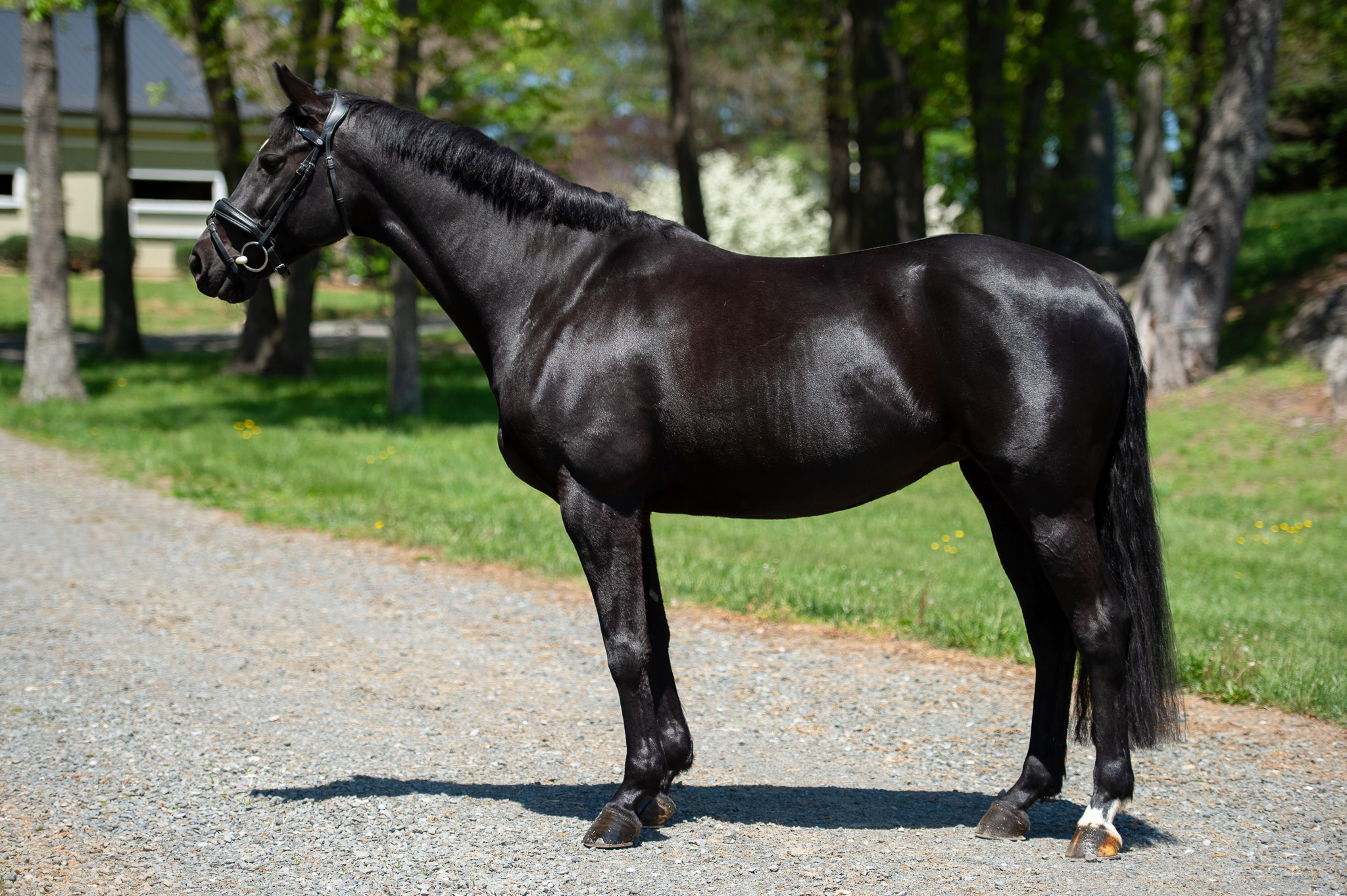This has been a frustrating year for many young riders, especially those who’ve had their sights set on the since-canceled NAYC. Among those is Anna Pierce, a 19-year-old young professional who operates AMP Eventing in Wylie, Texas. Anna has competed through the three-star level with her and her mother Diane’s River King and through the two-star and Intermediate level with Obiejohn (“Jax”), a 14-year-old off-track Thoroughbred (Ride to Win x June Breeze, by Bramante), with an eye — no pun intended — on their first three-star together this fall. We thank Anna and Equestrian Marketing Firm Athletux for sharing!

Photo by Diane Pierce.
The process of purchasing horses is always a bit of a gamble, but when you go ahead and purchase a one-eyed horse, you are bound to hear a few extra opinions. If you have ever had a feeling or love for something from the moment you laid eyes on it, then you know how I felt when I laid eyes on my OTTB Obiejohn. He had one eye when I met him, but it was something I immediately paid very little attention to. Sometimes a rider believing in their horse, and vice versa, can be the most important factor. In the case of “Jax” and I, my feeling about him has helped us overcome many circumstances of doubt.
Since purchasing Jax in 2014 our journey has been less than smooth to put it delicately. The first three years of our partnership were in fact very trying. After many minor injuries like abbesses, etc., it seemed to be one thing after another to the point where we eventually decided to just turn him out for an entire year to completely let his body rework itself from the ground up.

Photo by Diane Pierce.
During this year, I went off to NAYC with my first FEI horse and returned ready and eager to focus on bringing Jax back to work. I had decided that he was going to become an event horse or be sold as a jumper and I was committed to doing everything I could to assure it was the first option. I fully committed myself to developing a partnership with him and wanted to be sure I gave our chance at success my 100% effort. He had lost most of his muscle and had very little stamina. I vividly remember taking him to his first dressage lesson with my amazing trainer in Texas, Mary D’Arcy, and him only having the ability to canter two 20-meter circles each direction. To say I had my work cut out for me was an understatement!

Photo by Diane Pierce.
With wonderful people in my corner, I had tremendous help refocusing my energy on developing this one-eyed horse as much as I possibly could! We worked on basics for six months. After learning how to jump a one-eyed horse, and assist a one-eyed horse in all aspects of riding, we were able to compete Jax once again in a recognized competition! We competed at Beginner Novice and you could tell we definitely still needed work in the dressage ring!

Photo by Diane Pierce.
Everyone laughs about that dressage test to this day, the first half of the test he was cantering down centerline, spooking at the boards, and spooking at the horse in the ring next to him. Once he got to canter, he was perfect! Resulting in a wonderful, and relaxed last half of his test! His scores ranged from 4’s to 8’s on that test! He then put in double clear cross country and show jumping rounds. After he did so well on the second half of his dressage test, and double clear jumping rounds, we decided Jax was ready to have a crack at Novice level!
He stayed at Novice for almost a year, and he developed wonderfully. We eventually moved up to Training and took our time getting familiar with the level. Even though we had been able to successfully navigate Training level, many people made it clear they did not feel that a horse with one eye should jump bigger fences like the Preliminary level required.

Photo by Diane Pierce.
I once again had to dig deep and felt in my heart he was very capable. It may take Jax a bit longer to get his confidence up than a horse with two eyes, but some may be surprised to know that several one eyed horses have gone on to remarkable careers at the top levels of eventing, dressage, and show jumping, some even competing with much success at 5* events! In 2019, we were schooling technical questions on cross country, doing jumper shows at 1.15-meter, and schooling Prelim/2* level dressage tests. We felt ready and tried our hand at Prelim and my friend Jax did not disappoint. He did incredible!
In September of 2019 Jax and I completed our first CCI2*-S at Plantation Field International! Not only did he complete his first 2*, but he earned a minimum eligibility requirement! Coming home from Plantation, I knew I had something special in Jax. I began planning his next FEI competition and our goal of North American Youth Championships was created.

Photo by Diane Pierce.
With the goal of NAYC in mind I started focusing on more technicality in all phases. I decided to take Jax to Ocala Jockey Club in the CCI2*-L as Ocala Jockey Club is known for long courses, big jumps, and technical cross-country questions. Not only did he rise to the occasion, but he ran
around the cross country like a rock star! After OJC I knew he was ready for a move up to Intermediate.
The only problem was, the jump to Intermediate is very large. At our first Intermediate no one knew what was going to happen. Would Intermediate be too big for him? Would Jax decide Intermediate was too long? Would he still love his job? To make things worse, about 3-4 weeks before our move up I tweaked my back so bad that I could hardly walk for four days, let alone ride. I only had two and a half weeks from recovering from my tweaked back to get myself ready to pilot Jax around his first Intermediate. The competition came and it was as if he and been at the level for years!

Photo by Diane Pierce.
Unfortunately, Corona happened, and we have been forced to reroute our competition plans to compete at our first CCI3* in the fall and trying for NAYC in 2021, but we won’t let Corona stop us from achieving bigger and better things!! Jax has proven to everyone that even the most criticized and ridiculed horses can go on to achieve amazing things. Jax has taught me that the only thing you need is a little faith and hard work and you can achieve anything you set your mind to! My one-eyed unicorn has shown me where a deep belief and love for something can take you, and I cannot wait to see what the future holds.

Photo by Diane Pierce.
Equestrian Marketing Firm Athletux is proud to be one of the longest running agencies in the business, working exclusively with equestrian brands, athletes and events. Athletux understands your audience, utilizing innovative and creative ideas to build your brand and image. By integrating a passion for all things equine with drive and knowledge, you will achieve unparalleled results. Think of Athletux as an extension of your team, providing highly specialized tools to take your business to the next level. Learn more about how Athletux can help you revolutionize your business today. Visit athletux.com for more information, or follow along via social @athletux.








 Course designed by Nick Beshear. Diagram courtesy Emily Beshear.
Course designed by Nick Beshear. Diagram courtesy Emily Beshear.


































